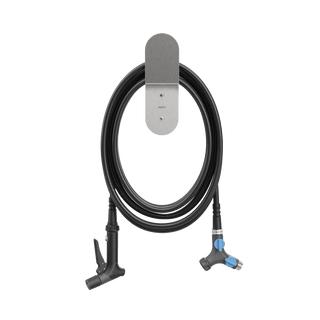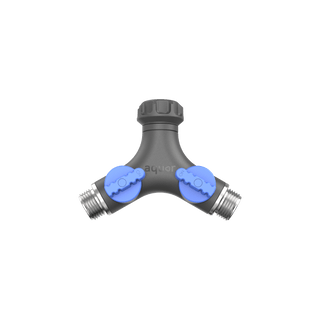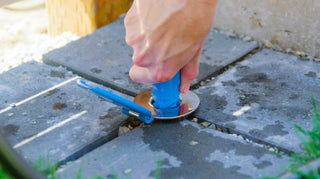How to Grow & Maintain Your Lawn

Growing and maintaining a lawn requires careful planning, proper preparation, and ongoing upkeep. Here's a step-by-step guide to help you establish and care for a healthy, beautiful lawn.
Planning
- Determine the purpose of your lawn (e.g., aesthetics, recreation, children's play area).
- Choose the right grass species for your climate, soil type, and sunlight conditions. Common options include Bermuda, Kentucky bluegrass, fescue, and zoysia.
- Measure the area of your lawn to calculate the amount of seed or sod needed.
Soil Preparation
- Test your soil to assess its pH level and nutrient content. Adjust the soil as needed to achieve the optimal pH (usually between 6.0 and 7.0) and nutrient balance.
- Remove debris, rocks, or existing vegetation from the area.
- Till the soil to a depth of 4-6 inches to loosen it and improve drainage.
Seeding or Sodding
- Seeding: Broadcast grass seed evenly over the prepared soil according to the recommended seeding rate for your chosen grass species. Rake the seeds lightly into the soil, and keep the area moist until the seeds germinate.
- Sodding: Lay sod pieces tightly together on the prepared soil, staggering the joints like bricks on a wall. Roll the sod with a lawn roller to ensure good soil contact then water thoroughly.
Watering
- Water newly seeded or sodded lawns frequently to keep the soil consistently moist.
- Early morning is the best time to water, as it allows the grass to absorb moisture before it evaporates in the sun.
- Watering deeply encourages deep root growth and drought resistance.
- Avoid overwatering and watering in the evening, as this can promote fungal diseases.
- As the grass establishes, gradually reduce the frequency of watering but increase the amount of water applied to encourage deeper root growth.
- Pro tip: Aquor's outdoor faucets make accessing water quick and easy. The flush, quick-connect Ground Hydrant is ideal for maintaining a lawn.
Mowing
- Once the grass reaches a height of about 3 inches, mow it for the first time, cutting no more than one-third of the grass height.
- Set your mower blades to the appropriate height for your grass species and adjust as needed throughout the growing season.
- Mow when the grass is dry to prevent clumping and disease spread.
- Regular mowing helps promote healthy growth and prevents weeds from taking over.
Fertilizing
- Apply a balanced fertilizer according to the needs of your grass species and soil conditions. Follow the recommended schedule for fertilization, typically in the spring and fall.
- Avoid over-fertilizing, as this can lead to excessive growth and nutrient runoff.
Weed Control
- Keep weeds at bay by regularly removing them by hand or with the help of a weeding tool or hoe.
- Herbicides can also be used, but be sure to follow the instructions carefully and use them sparingly—keep in mind the health and safety of pets and children.
- A thriving, well-maintained lawn is less susceptible to weed infestations, so proper watering, mowing, and fertilizing are essential for weed control.
Pest and Disease Management
- Monitor your lawn for signs of pests or diseases and take appropriate action to prevent or treat problems. Brown patches, chewed grass blades, and unusual discoloration can all be indications of pests or diseases.
- Treat problems promptly with appropriate pesticides or fungicides to prevent them from spreading.
- Proper watering and mowing will help promote a healthy lawn.
Regular Maintenance
- Maintain your lawn by regularly mowing, watering, fertilizing, and addressing any issues that arise. Raking leaves, dethatching, and edging can help keep your lawn looking its best as well.
- Consider aerating and overseeding your lawn annually to improve soil health and fill in bare patches.
- Aerating your lawn helps alleviate soil compaction and allows air, water, and nutrients to penetrate the root zone more effectively. You can rent or purchase a lawn aerator or hire a professional to do the job for you.
- Over time, your lawn may develop thin or bare patches. Overseeding involves spreading grass seed over these areas to encourage new growth and fill in gaps. Choose a high-quality grass seed that is suitable for your climate and existing grass type.
Seasonal Adjustments
- Remember that lawn care needs may vary depending on the season and local climate. Adjust your maintenance routine accordingly, focusing on tasks like winterizing in the fall and preparing for summer heat stress in the spring.
By following these steps and staying attentive to your lawn's needs, you can establish and maintain a beautiful, healthy lawn that enhances your outdoor space.
Lawn Terms
Tilling: The purpose of tilling is to mix organic matter into your soil, help control weeds, break up crusted soil, or loosen up a small area for planting. You do not need to till or break up the soil very deep—less than 12 inches is best. Tilling too often or deeply can do more damage than good to your soil.
Broadcasting: The process of spreading seeds over the soil to facilitate seed to soil contact. Broadcast seeding is typically recommended in the fall, unless particular circumstances call for spring seeding. Before seeding takes place, the entire area must be aerated to allow for proper penetration into the soil. Sometimes broadcast seeding has a higher likelihood of success if the soil is rolled or tracked before and after seeding as long as the surface is not wet. These extra measures ensure even better seed to soil contact.
Sod: A roll of grass with a surface layer of soil and matted roots that can be applied to a patch of land.
Dethatching: Helps reduce thatch. A thick layer of thatch can prevent water, air, and nutrients from reaching the soil and roots, making your grass susceptible to disease and pests. Dethatching also allows you to aerate your lawn at the same time, which can improve drainage and help the roots grow deeper.
Edging: Creating a clear dividing line between the grass in your lawn and the flowerbeds, paths, patios, or other sections of your yard, primarily for the purposes of landscaping. For smaller lawns, a lightweight, easy-to-handle grass trimmer is an ideal choice. For larger plots, go with a more powerful brushcutter or similar tool.
Aerating: Aeration involves perforating the soil with small holes to allow air, water, and nutrients to penetrate the grass roots. This helps the roots grow deeply and produce a stronger, more vigorous lawn.
Overseeding: The planting of grass seed directly into existing turf, without tearing up the turf, or the soil. It's an easy way to fill in bare spots, improve the density of turf, establish improved grass varieties, and enhance your lawn's color.











